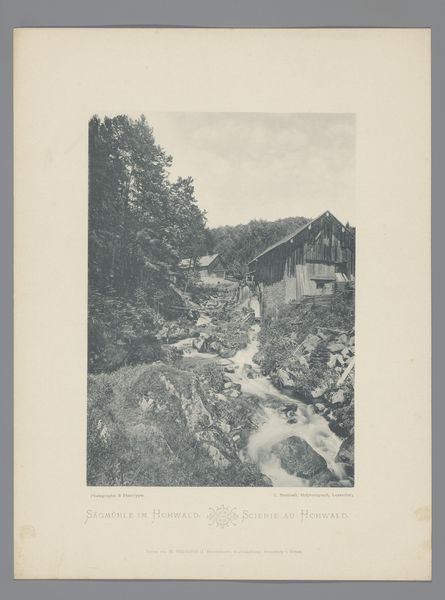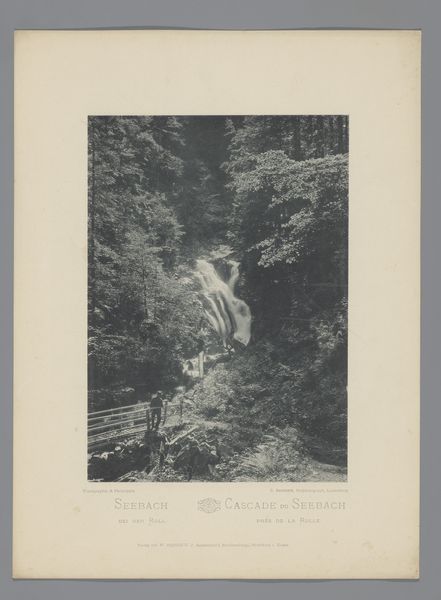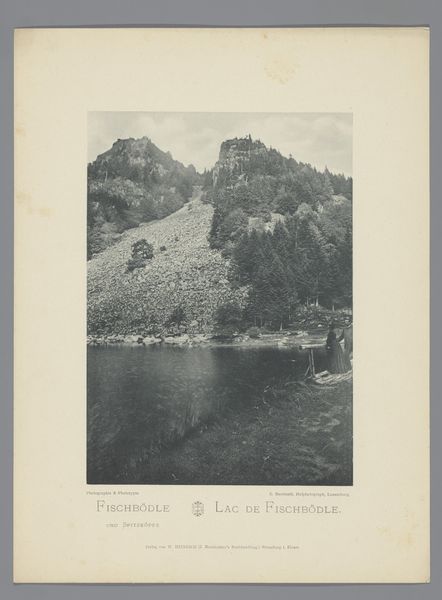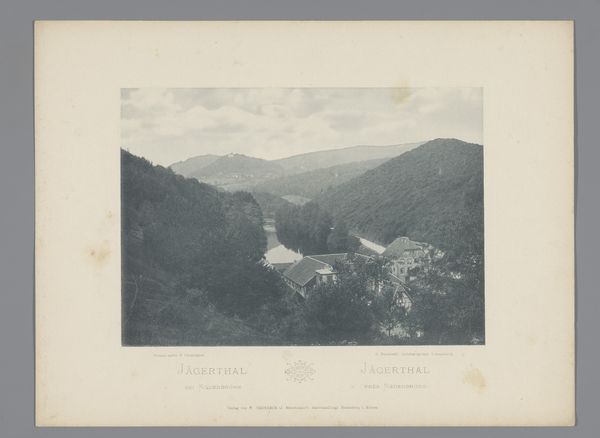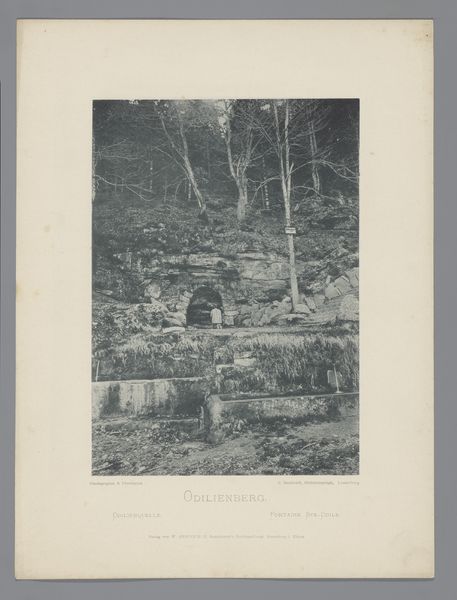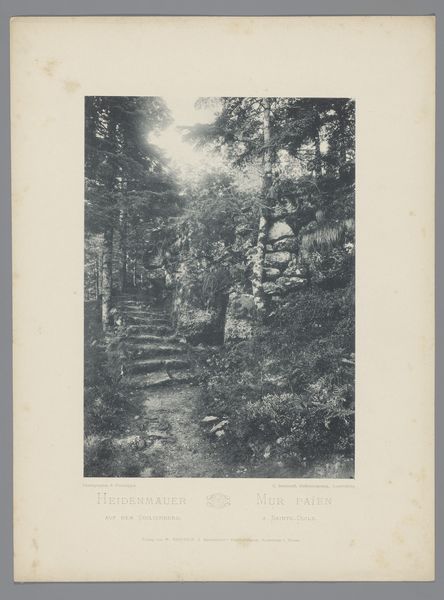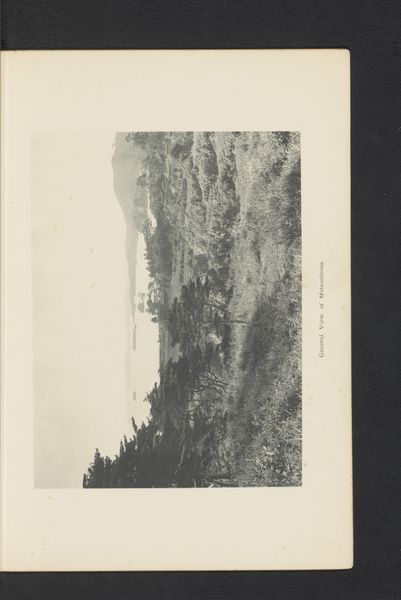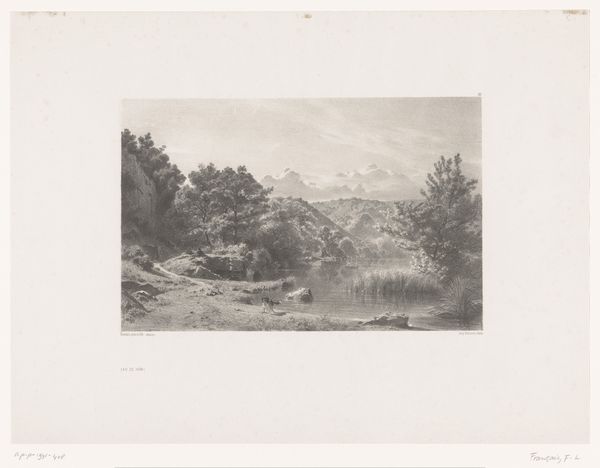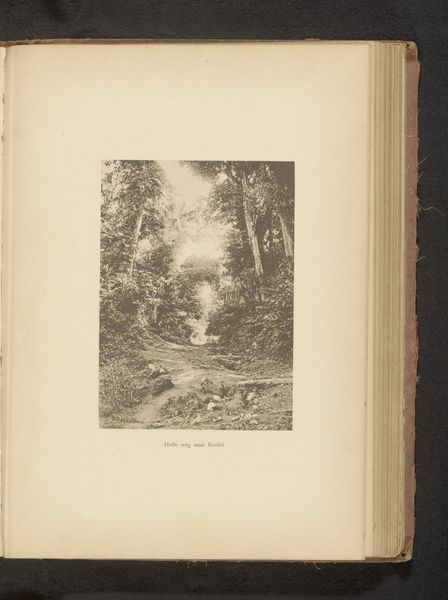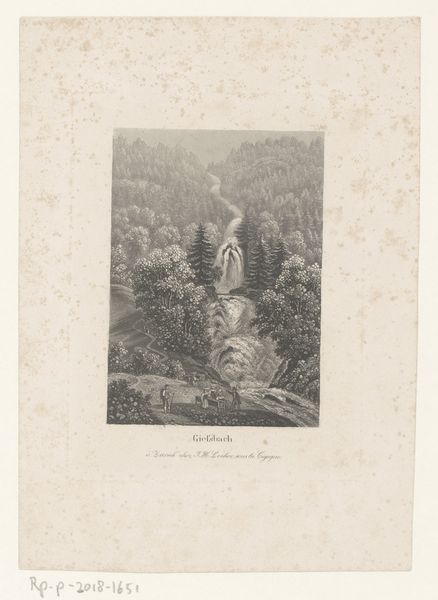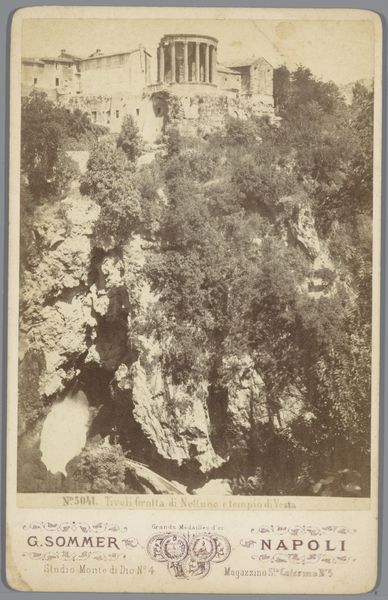
Dimensions: height 214 mm, width 153 mm
Copyright: Rijks Museum: Open Domain
Editor: This is Charles Bernhoeft's "Gezicht op Château du Nideck," made before 1894. It looks like a photographic etching or print, and the atmosphere is just so heavy, so… Romantic, with a capital 'R'! What stands out to you when you look at this? Curator: I see a carefully constructed image steeped in the aesthetic traditions of its time, but also a work wrestling with power dynamics. Consider the ruin, the castle, a potent symbol of feudal authority now crumbling. And that ruin is being reclaimed by nature. What do you think Bernhoeft is trying to convey with that interplay? Is it simply a celebration of the sublime, or is there a commentary on the decline of aristocracy? Editor: I guess I hadn't thought of it that way. I was focused on the surface – the textures, the light. Your interpretation is very interesting! So you see the tension between the castle as a power symbol versus the nature taking it back as social commentary? Curator: Absolutely! And look at the photographic process itself, a relatively new technology democratizing image production. In what ways did photography challenge traditional hierarchies within art? Bernhoeft may be consciously or unconsciously hinting at seismic shifts occurring during his era, a time where old orders were constantly under pressure. It makes us think about who has the power to depict landscapes and ruins, and what agendas they might bring. Editor: Wow, I’ll never look at a landscape quite the same way again. Thanks for offering the lens of historical context. Curator: It’s so important to remember art doesn’t exist in a vacuum. Thinking about art in relation to society and power offers much to consider.
Comments
No comments
Be the first to comment and join the conversation on the ultimate creative platform.
